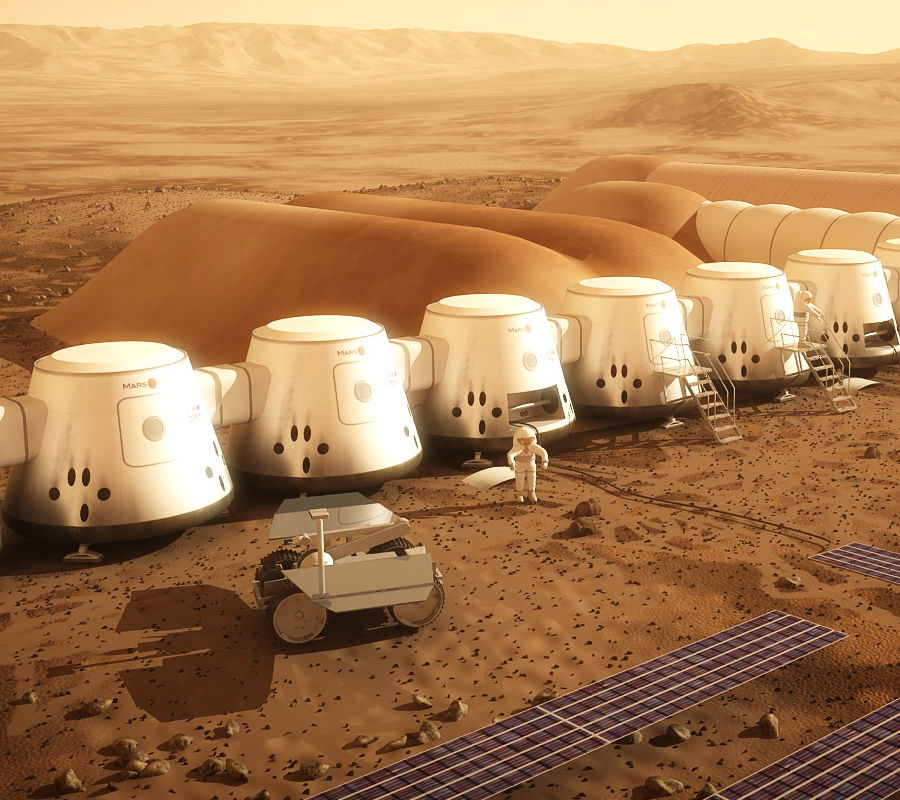Some buildings and structures could be constructed with simulated Martian soil instead of materials coming from Earth. A study found that simulated Mars soil can be packed together into a brick-like material without any added ingredients to hold it together.
The team worked with the materials and found that when adding the right amount of pressure, the components formed into tiny blocks stronger than steel-reinforced concrete. The discovery came as a surprise, as Earth construction materials are created differently. Particles need to be mixed with a particular type of binder to stay solid. The results were published on April 27 in the journal Scientific Reports.

Can we create compact surfaces out of Martian soil?
As the study used simulated Martian soil instead of real soil, there’s a chance that the same results couldn’t be achieved on Mars. However, if the results are as expected, it may be good news to astronauts who will travel to the planet, as using Martian resources may be critical to sustaining a trip to the Red Planet.

“It gives the soil strength when it’s compacted,” said Yu Qiao, lead researcher on a NASA-funded study about this technique, and structural engineer at University of California in San Diego, according to The Verge.
Before conducting the study, Qiao and his team had been working on alternative ways to turn simulated lunar soil into construction materials, back when NASA was looking to return to the Moon. The lunar soil needed a binder to stick together, but the team wanted to find a way to use a small quantity of binder. According to Qiao, the building materials are made up of around 15 percent binder, and through different compression techniques, the team was capable of reducing the needed binder down to 3 percent, while still having a strong lunar soil material.
In 2010, NASA changed its focus from the Moon to Mars, so the team changed its research too. The team attempted to pack the dirt together using 6 percent binder and the method proved to be effective for the simulated Martian soil. So they decided to conduct further tests using less binder until they found that no binder was needed at all.
“Our initial thought was: let’s borrow the success of lunar soil and see if it works on Martian soil,” said Qiao, according to The Verge. “Then one day, I told my research assistant, let’s just compact the soil stimulant itself. And it still worked.”
The results led researchers to think there was some ingredient in the Martian soil that helped the material to stick together. After studying each chemical component, they discovered the component was iron oxide, a chemical compound that gives Martian soil its signature red color. According to Qiao, when iron oxide is pressured, it cracks easily and forms fractures with very clean and flat surfaces, and when such surfaces were firmly pressed together, they formed strong bonds.
Researchers believe Martian soil surfaces can be used to build large structures
Qiao hopes that Martian soil can be used to build habitats or landing pads for spacecraft that land on the planet’s surface. He believes the best way to make these structures is to create a form of additive manufacturing, layering the soil. It’s the same principle used for 3D printing, and the technique could make it easier to build large structures on Mars.
However, the findings aren’t a full solution to construction on the Red Planet at the moment. The team was only able to build tiny bricks, so there’s a possibility that larger bricks won’t hold up the same way. The team hasn’t determined its durability yet either, which is important as structures need to be strong.

Another possible hazard from using Martian soil to build structures is that the dust from the soil could break off into the air that astronauts are breathing, and inhaling enough particles could cause health problems, as the dust may contain a type of salt called perchlorate. Perchlorate is found everywhere on the Martian surface, and it can be highly toxic to human thyroid glands.
Over the years, several studies have been conducted to learn the better way to make Martian bricks with its soil. One of those investigations attempted to take some heating device onto Mars to bake the dirt into bricks, and another one wanted to take microbes to Mars that could feed on human waste and create a binder-like material. However, Qiao’s team believes that not much is needed to create the Martian bricks.
Source: Nature
